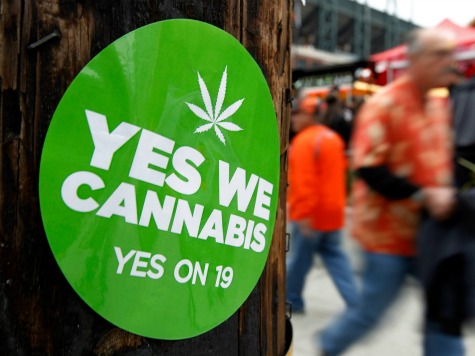
The San Francisco Chronicle carried a story over the weekend that chastised Silicon Valley venture capitalists for failing to throw money at the marijuana industry the Chronicle says is “experiencing a 68 percent growth rate.”
Despite the fact that venture capitalists are aware that the sale or cultivation of any amount of marijuana is still a felony with a mandatory minimum sentence under federal law of five years and up to $250,000 fine, if marijuana was a high growth industry, they would find some indirect way to get in on the action. But with less and less young people trying marijuana, the marijuana industry lacks the growth opportunities venture capitalists crave.
The principles of building a business in the tech world or the film world are generally the same. In addition to finding the working capital to finance growth, having a network of those who have done it before can provide tremendous value to any entrepreneur. Venture capitalist firms provide not only money, but are usually staffed by experienced executives who have not only been successful on their own, but have also watched dozens of startups succeed and fail. Combining cash with advice and mentoring is the product that VC firms offer young companies.
Justin Hartfield of Newport Beach is a successful entrepreneur that started medical-marijuana dispensary location service startups called WeedMaps.com and Marijuana.com. He bragged to the Chronicle that he never accepted “one dime” of Silicon Valley venture money in building his marijuana-related enterprises, which he says make “north of $25 million a year.”
Hartfield believes “Silicon Valley is totally out of touch” with the industry. “There’s no [medical-marijuana] dispensaries on Sand Hill Road” near Stanford University, where most VC firms have their operating offices. Hartfield admitted to the Chronicle that he tried and came close to getting VC money four years ago from the top tier Northern California billionaire and prestigious venture capitalist Tim Draper of Draper Fisher Jurvetson. But after telling Hartfield he had a great business plan, Draper dropped out a few weeks later.
Hartfield took the rejection as motivation to start the venture capital firm of the Ghost Group, located in legendarily conservative Orange County. Ghost is believed to have raised and invested $10 million in marijuana related start-ups and is working on securing another $25 million from investors.
Hartfield sarcastically said about Silicon Valley venture firms, “You guys are willing to invest all this money, you say you’re all disruptive, but when the rubber meets the road and we’re talking about real, legal disruption, you guys head for the hills.”
The Chronicle repeats the now commonly accepted statement that marijuana is California’s largest cash crop. The basis of this widely cited belief is a 2006 report by Jon Gettman, a former director of the National Organization for the Reform of Marijuana Laws, that said America’s annual marijuana production was a whopping $35.8 billion.
Gettman estimated America’s domestic marijuana crop in 2006 consisted of 56.4 million marijuana plants cultivated outdoors worth $31.7 billion and 11.7 million plants cultivated indoors worth $4.1 billion. He wrote, “The domestic marijuana crop is larger than Cotton in Alabama, larger than Grapes, Vegetables and Hay combined in California, larger than Peanuts in Georgia, and larger than Tobacco in both South Carolina and North Carolina.” Gettman’s report ranked California as the nation’s top producer with one-third of the marijuana harvest worth about $13.8 billion. Gettman currently is a member of the staff of High Times.
But research titled “Marijuana Legalization: What Everyone Needs to Know,” by a team of researchers and public policy experts from Carnegie Mellon University, Pepperdine University, UCLA, and the RAND Corp. “dumps cold water on Gettman’s claims.” The team scientifically concluded that marijuana might make the top 15 in crops, “ranking somewhere between almonds and hay and perhaps closest to potatoes and grapes,” the researchers say.
A Gallup public research poll found that 38% of Americans admitted to having tried marijuana, compared with 34% in 1999 and 33% in 1985. More importantly for any supposed growth industry; the number of 18-29 year olds that have tried marijuana has fallen from 56% in 1985, to 46% in 1999, and only 36% in 2013. Older users have gone up, but this just appears to be the demographics moving up as the 1970 baby boomer hippies are now today’s senior citizens.
There is a saying in the venture capital world that the sweetest place to be in business is where “the tide comes in and all the boats float.” This means only invest in businesses that are about to have a big increase in sales growth. Despite all of the buzz from the San Francisco Chronicle and the industry, marijuana use is not the type of high sales growth opportunity that is compelling enough to attract venture capital investors.

COMMENTS
Please let us know if you're having issues with commenting.